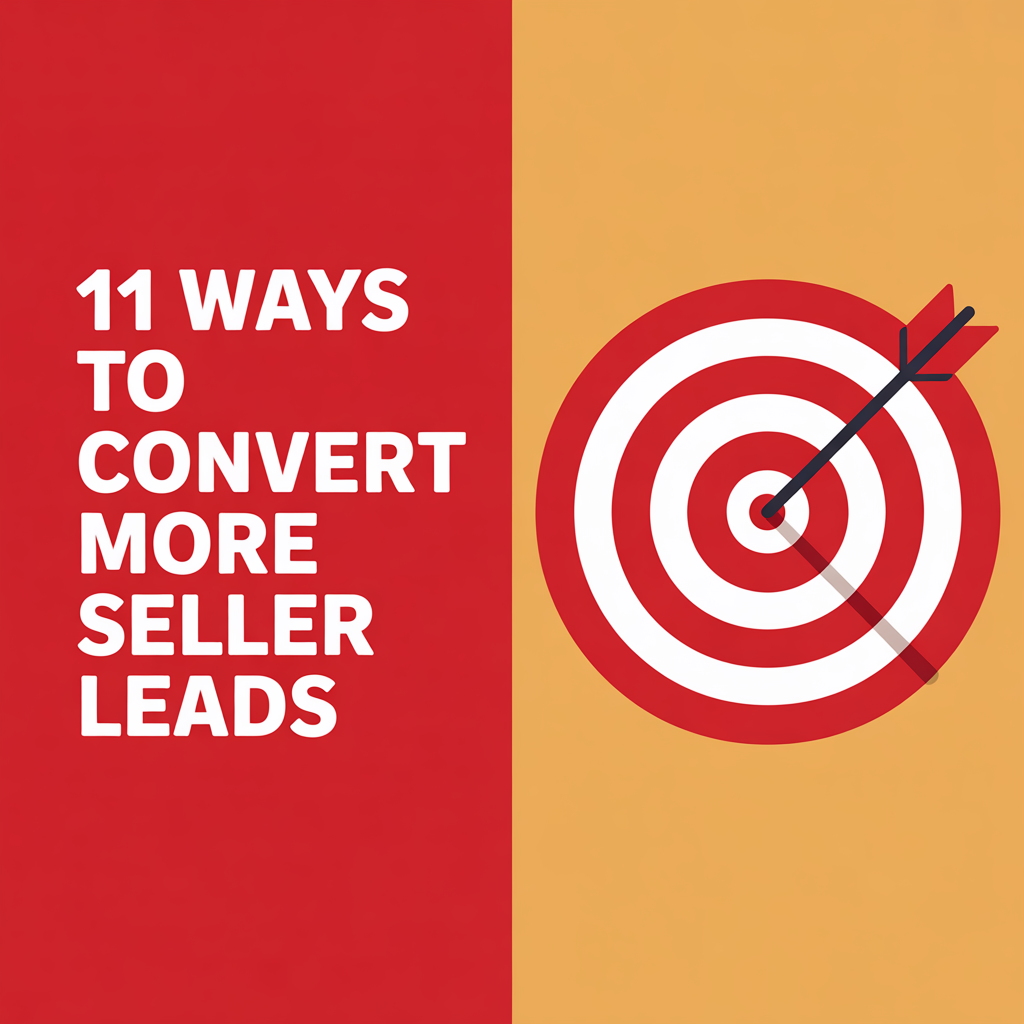The Cold Calling Conundrum and the Power of Systems
Generating motivated seller leads consistently is the holy grail for real estate investors. But traditional cold calling—long, draining, and often unproductive—can quickly burn out even the most resilient teams.
Recognizing this, Benmont Locker and Eric Brewer revolutionized their inside sales approach. Through trial, adaptation, and laser-focused execution, they built a high-performance system that not only boosted lead quality but also created a sustainable, team-driven structure.
Rethinking Lead Management: From Passive to Proactive
Initially, the team followed the industry norm—waiting for inbound leads via forms or phone calls, then passing them to acquisition agents. Simultaneously, a group of virtual assistants handled outbound cold calling. But the results were lackluster. The cold calling experience felt impersonal, the responses were robotic, and the conversion rate was poor.
Why the VA Strategy Failed
The team found that having virtual assistants handle outbound calls lacked personalization and local context. Leads received generic interactions that didn’t inspire confidence. This impersonal approach made it clear that converting warm interest into meaningful seller conversations required a trained, market-aware sales team.
The team realized the issue wasn’t the channel—it was the execution. Cold calling, texting, and lead follow-up are sales activities. Delegating these to undertrained or overseas staff diluted their effectiveness. So they pivoted: skilled salespeople took ownership of these tasks in short, focused sprints.
Bite-Sized Sales Sprints: A Game Changer
Instead of dragging out eight-hour cold calling shifts, Benmont’s team restructured outbound efforts into short, high-intensity 30–60 minute sprints. These were done twice a day in a team environment that encouraged collaboration and competition.
Gamifying the Process
Each sprint became a competition. Team members raced to see who could produce the best results in a set window. This gamification created excitement and improved daily performance, making each sprint feel like a mini sales challenge.
- Incentivized structure: Salespeople were monetarily rewarded based on performance.
- Team energy: The collaborative atmosphere made calling feel like a shared challenge, not a solo grind.
- Strategic timing: Calls and texts were timed around when prospects were most likely to answer—early morning, lunch breaks, evenings.
Building a Sales-First Culture
The philosophy was clear: every point of contact is a sales opportunity. Whether it's a cold call, a response to a text, or an inbound inquiry, the team treats each interaction with intent and care. They built an internal Business Development Center and trained the team rigorously—not just on scripts, but on empathy, timing, and local market knowledge.
Micro-Breaks that Matter
Recognizing the importance of maintaining morale, the team allowed micro-breaks, including 15-minute basketball games. These short, structured moments of play improved mental clarity, fostered team bonding, and helped avoid burnout—without sacrificing performance.
To keep morale high, they even allowed brief team breaks, like 15-minute basketball sessions—as long as calls weren’t missed. Productivity soared. Engagement improved. And most importantly, the quality of conversations with motivated sellers got better.
Texting Done Right: Personalized and Local
Texting had also been an issue—particularly when handled by remote VAs unfamiliar with cultural context. When a lead mentioned a sensitive event, like a family member’s passing, VAs would respond with irrelevant follow-ups. That impersonal experience killed trust.
Sprinting Through Text Responses
The team adopted the same sprint logic used in cold calling for texting. Messages were launched early in the day and response handling was scheduled around peak engagement windows like lunch breaks, end-of-shift times, and evenings. This ensured fast, thoughtful replies.
So the team brought texting in-house. Trained local reps sent out texts in the morning, then managed replies as they rolled in throughout the day. The response time shortened, and the conversations deepened.
Delegation with Intention: Dump What Doesn’t Work
If a tactic wasn’t producing results or was dragging down team morale, it was removed. The team tested, iterated, and only kept what worked. This lean approach allowed them to stay agile and focused. Nothing stayed in the daily workflow unless it contributed to revenue or meaningful seller engagement.
The Power of Beta Testing
Strategies were never assumed to work indefinitely. Each new process was first deployed as a beta. If it didn’t show results quickly, it was pulled from daily routines. The team stayed flexible, allowing only proven methods to take up valuable time.
Scaling Smart: Dividing Roles by Value
Many investors fall into the trap of having one person do everything—acquisitions, follow-up, cold calling, texting. Not here.
Benmont and his team created a clear hierarchy:
- Chief Sales Officer – Oversees entire sales structure and training.
- Acquisitions Manager – Leads boots-on-the-ground agents.
- Five Acquisition Agents – Focused exclusively on closing new deals.
- Five Inside Sales Reps (ISRs) – Manage lead generation, cold calling, texting, and follow-up.
- Senior Inside Sales Rep – Oversees day-to-day ISR operations.
Highlighting Elisa’s Role
A standout team member, Elisa, serves as the senior ISR and is pivotal to daily coordination. She acts as a go-to leader, bridging communication between managers and the inside sales floor.
Follow-Up: The Real Bottleneck
They identified follow-up as a hidden productivity killer. Acquisition agents were being asked to chase cold or lukewarm leads—activities that didn’t match their strengths or produce strong ROI. So the team split follow-up responsibilities:
- Hot follow-ups (post-appointment, near-closing): Handled by acquisition agents.
- Everything else: Delegated to ISRs, who had the time and tools to nurture these leads.
The Value of the Post-Appointment No-Contract Bucket
This is one of the most lucrative segments. It includes leads who are highly motivated but just shy of commitment. These are handled directly by acquisition agents due to their high likelihood of conversion.
This division ensured that high-value team members spent their time on high-value activities.
Smart Lead Bucketing: Precision in Action
The system also categorized leads into 22+ distinct “buckets” based on urgency, motivation, and likelihood of closing. This precision allowed for:
Depth Behind the 22+ Buckets
Each bucket isn’t just a label—it dictates cadence, tone, and follow-up methods. For instance, “motivated but unavailable” might trigger a biweekly text check-in, while “cold but curious” could receive educational content instead of a sales pitch.
- Targeted messaging
- Appropriate timing for follow-ups
- Efficient delegation to the right sales tier
Acquisition agents handled the critical buckets (e.g., in-negotiation, hot follow-up), while ISRs managed long-term nurture pipelines.
The Results: High Morale, Fast Responses, Better Conversions
The revamped inside sales model improved lead response time, conversation quality, and overall team morale. Instead of grinding through long shifts, salespeople worked in sharp, productive bursts. With five to seven people managing communication at any given time, nothing fell through the cracks.
Full-Day Coverage for Lead Responses
One of the team's tactical advantages was maintaining lead response coverage until 8 PM. This ensured prospects who replied after work still received timely, professional follow-ups, boosting trust and conversion.
Motivated seller leads didn’t just get responses—they got fast, human, informed responses.
Don’t Underestimate the Cost of $3/hour Outsourcing
Many beginner investors make the mistake of outsourcing lead management to VAs for a few dollars per hour. While cost-effective on paper, this approach often kills momentum and trust during critical lead moments—especially when personalization and cultural understanding matter most.
Key Takeaways
Treat Inside Sales as a Core Revenue Function
All lead communication—calls, texts, follow-ups—should be owned by trained salespeople, not delegated to low-cost virtual assistants.
Cold Calling Works—If Done Right
Traditional cold calling fails due to poor execution. Short, high-energy calling “sprints” with incentivized teams dramatically improve engagement and conversion.
Gamification and Morale Boost Productivity
Turning sales tasks into competitive challenges and allowing brief breaks (e.g., basketball) improves team morale and performance.
Local, Personalized Texting Builds Trust
Automating or outsourcing texting leads to tone-deaf responses. In-house reps with local knowledge significantly enhance communication quality.
Delegate Strategically Based on Skill and Value
Acquisition agents should only focus on high-value deals. Inside Sales Reps (ISRs) handle everything else, including long-term nurture and cold leads.
Follow-Up is Where Deals Die—or Are Revived
Smart segmentation (e.g., “post-appointment no contract” leads) and assigning them to the right team members ensures no hot lead goes cold.
22+ Buckets Drive Laser-Focused Follow-Up
Leads are categorized into over 22 segments to fine-tune messaging cadence, tone, and sales tactics.
Only Keep What Works—Scrap the Rest
The team constantly beta-tests and removes underperforming strategies to keep the workflow lean and high-performing.
Extended Response Coverage Wins Deals
With team members available till 8 PM, prospects receive fast responses—even after work hours—boosting trust and conversion rates.
Cheap Outsourcing Can Cost You More
Outsourcing lead management to $3/hour VAs often undermines rapport and lead quality—especially in emotionally sensitive or high-stakes interactions.
Ready to Build Your Own High-Performance Inside Sales System?
If you're still managing leads on your own or outsourcing vital conversations to undertrained VAs, it’s time to rethink your strategy. Build a team that understands your market, your mission, and your motivated seller leads.
Start with smart hiring. Prioritize training. And most importantly, treat every lead like a live wire—because that’s what it is.
It’s time to build a real sales engine that fuels your business.






